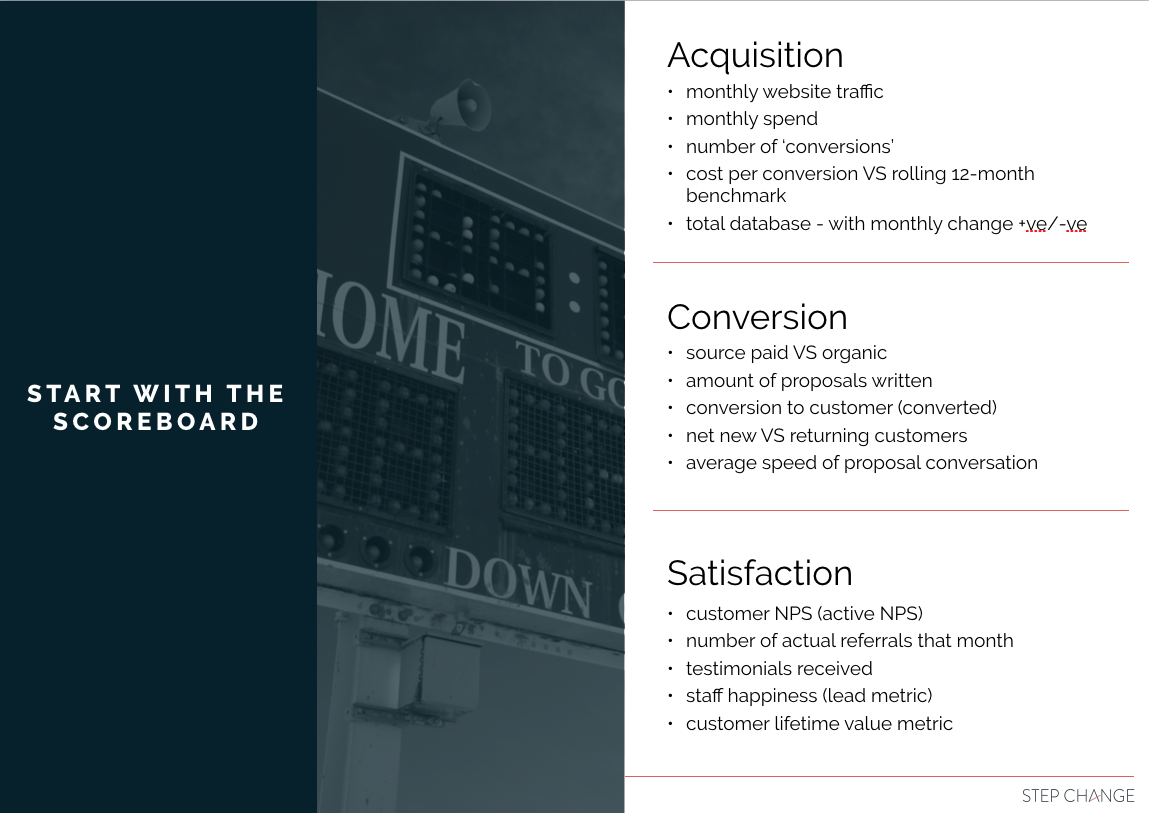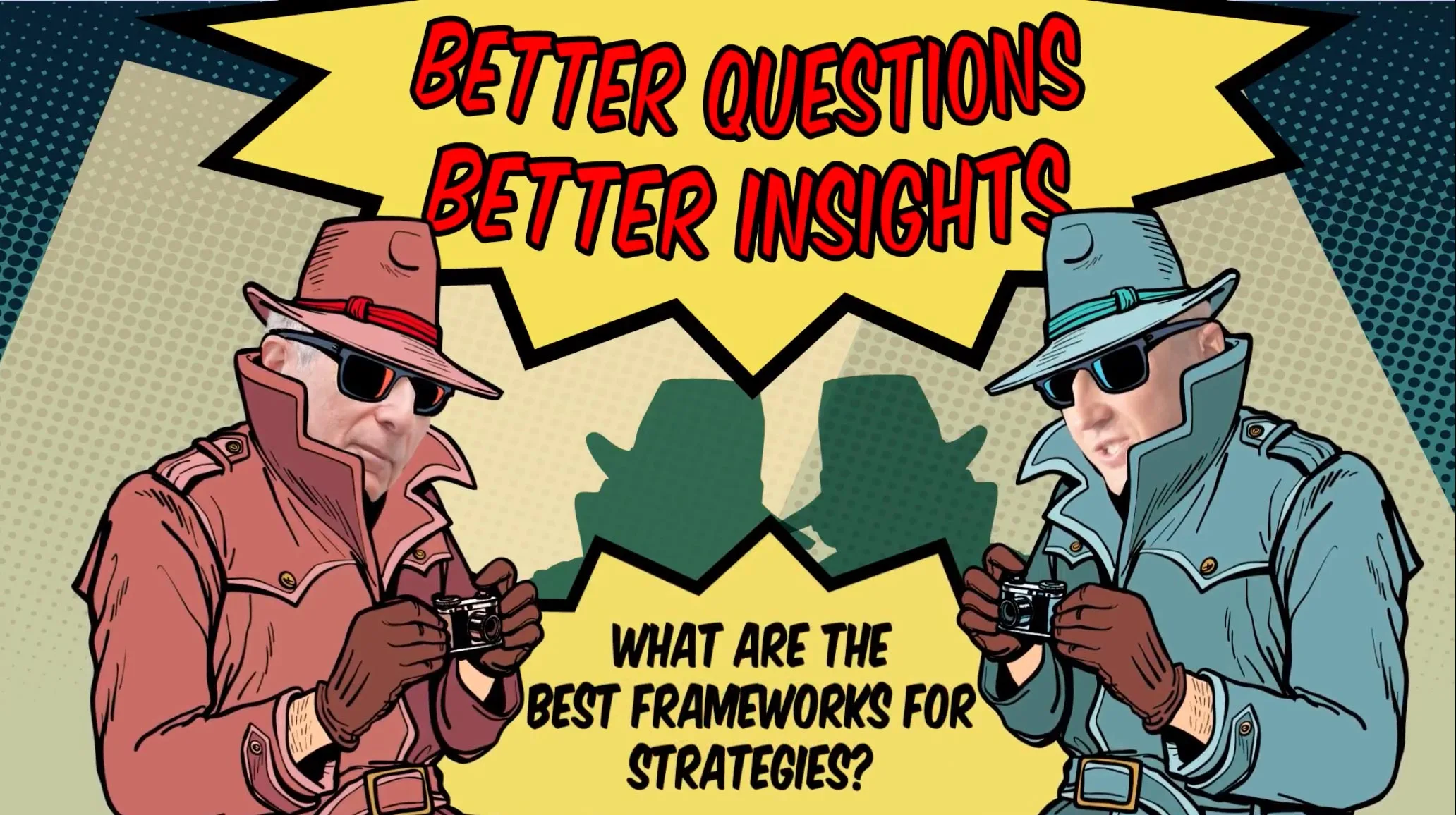Have you ever tried driving to a new place for the holidays without a map? Going about with your business without a marketing plan can feel like that. Sure, you might eventually get to your destination — but you risk making some costly and time-consuming turns along the way.
Wrong turns like creating a product only to find out there was no substantial demand for it or pricing your services too low.
Having a great marketing plan and executing it well can give you the confidence that you’re on the right path and that you’ll get to your goal effectively.
What Is a Marketing Plan?
A marketing plan is a critically important tool for marketers. But before I get to its definition, it’s appropriate to begin by defining what marketing is.
You see, its definition has evolved over the years.
Marketing’s definition used to be “getting goods and services from concept to customer.”
But as you already know, the world has become more integrated. Technology is breaking down walls and siloes, allowing consumers to be within reach. And with all this much change, it’s only fitting that marketing gets a redefinition.
And here it is:
Marketing is all about winning where your business meets the market. [Tweet this!]
Marketing should:
- Define a specific audience
- Understand their stated need
- Connect to their geography
- Provide them with a solution
- Represent value that they’re willing to pay for
- Get all this done in a timely manner
Hence the marketing plan’s definition is this:
A marketing plan is your roadmap for targeting and retaining customers. It’s a guiding document that outlines a campaign that aims to carry out a company’s marketing strategy for a specific period.
With every marketing endeavour, we’re interested in outcomes and results. So the key part is measurement. But without a winning marketing plan, how would you know what to measure? [Tweet this!]
Winning Where Your Business Meets the Market
With the new definition of marketing comes knowing about the two things that really matter.
As a marketer, you need to be obsessed over lowering the cost to acquire a customer and maximising their lifetime value.
This is how you win.
And to do that, take note of the four core themes:
1. Be a purpose-led organisation. Time and again, we see that purpose-led organisations get optimal results in at least three key dimensions:
- Staff engagement: staff are 1.4x more engaged
- Perceived quality: consumers have a better experience with your offering
- You are offering value beyond price.
2. Understand your customer journey. The number of customer journey touchpoints offline and online are increasing; that’s why understanding how customer journeys really work is a must for marketers. But the reality is, marketers rarely ever do a full audit of the customer journey.
At Step Change, we have identified that a common customer journey has six stages:
- Finding Out. The first contact with your customer is where you set their expectations and make your brand promises
- Addressing Concerns. Once customers know about your product or service and are interested in more, how do you help them access the information they require and overcome any barriers to purchase?
- Face-to-Face. What experience are you providing once the customer intends to buy from you?
- The Sale. How do you treat your customers when they part with their money?
- Using the Product/Service. How does your product or service make your customers feel? Is that experience consistent with your brand personality?
- Follow-Up. The brand relationship starts, rather than ends, with purchase. At this stage, what could be your customers’ next need? Would you be ready to meet them?
3. Throw away your traditional marketing calendar. Instead, build scalable marketing assets. Their value and impact increase over time, and unlike traditional efforts, you gain lasting results from assets that were built once.
4. Be lean. In the VUCA environment, the lean principles are more relevant than ever. It’s all about agility meets culture, meets mindset, meets growth hacking.
How to Create a Marketing Plan that Works
With our work with businesses all over Australia and internationally, we often find that, whilst executing a marketing plan is challenging in itself, marketers often find it difficult to decide what to do and how to do it.
Here are the essential elements of a marketing plan.
1. An Overview of the Company’s Current Standing
A company cannot properly market itself unless it knows where it stands within its marketplace. The industry leader does not use the same strategy as the industry newcomer.
Your marketing strategy can only arise out of knowing your context. If you’re planning for any marketing strategy, you need to remember that context is king — because when your context changes, then everything changes.
There are only four ways we know that are your options for growing a business:
- Grow the market for your goods/services
- Take brand share of that market
- Upsell/cross-sell to existing customers
- Increase the frequency of existing customers
And while a business might perform all four functions, a marketing plan must identify and order the strategic priorities of these. Without alignment on this, it’s impossible to make true strategic choices.
Recommended reading: The Death of the SWOT Analysis and the Rise of the Strategic Radar
2. A Tightly Defined Target Market
The marketing plan must define a target. In an increasingly competitive environment, it is impossible to deliver value to everyone, and the market that is actually interested in your product may be different than you think.
To arrive at a narrowly defined target market, the dimensions you need to determine are the following:
- Who are they?
- How do you describe them?
- What do they think?
- What do they do?
- Where do they get their information?
- Where can you find them?
- How few do you really need to grow?
- What’s their CLV (customer lifetime value)?
Don’t worry if this one particular audience does not represent all your customers. There’s what we call ‘advertising spillage.’ This means that if you target a tighter audience, your message will still ‘spill’ over to other people who might buy from you.
Recommended reading: How to Achieve Product/Market Fit
3. Dashboards: Clearly Defined Marketing Goals
Using dashboards is one of the most efficient ways to deliver data on key performance indicators in a way that doesn’t hinder with your processes.
By bringing data analytics into your day-to-day business practices, you are assured that decision-making around marketing strategy is data-driven, more informed, and therefore, more effective.

4. Tactics
Will you use Facebook, Twitter, or both? Will you focus on direct sales or use indirect marketing to reel in your customers? Are you trying to drive traffic to your website, or would you rather your prospects call a certain telephone number?
All of these tactics should be laid out at the beginning of the process so that you will know what to expect from your marketing and how to define success for your plan.
5. Budget
The ideal budget for every marketing campaign is unlimited because there will always be someone else to convert. However, you must define your marketing by the scale that your company can handle.
Your budget will help to crystallise the rest of your efforts by defining what is possible for your company to achieve within a certain time frame and what you may want to leave until later.
You can plan your budget split using Google’s influence graph.
Recommended reading: How Much Should You Spend on Marketing?
Marketing Plan Execution: Best Practices
1. Work in Sprints and Milestones
Some marketers would do monthly sprints. But at Step Change, we recommend 90-day sprints; this means you still have the flexibility to respond to small changes whilst still effectively moving towards the intended strategic goal.
You goals must be tied to key milestones; these are strategically crucial events that must be achieved (i.e. product releases, periodic surges in demand, or particular events that will yield great value for the business.
Recommended reading: Why Your Marketing Plan Will Fail
2. Maintain Flexibility
Marketing plans must be able to change with the wind. The internet gives the modern consumer nearly infinite choice and lowers the barriers of entry to most industries substantially.
As your customers change behaviours and your competitors introduce disruptive technologies, your company must be able to respond with a proper change in strategy.
3. Evaluate Goals
Goals must be realistic in order to set a proper benchmark for success. It may not be possible to convert enough customers to pay for a campaign within a single iteration of that campaign if you are selling high-ticket items.
If your market tells you that you need more time, for example, your marketing plan should reflect that. If not, you may abandon an effort that is actually working before it has a chance to produce results for you.
4. Ensure Responsibility and Accountability
Effective marketing is usually the sum total of many moving parts. Graphic designers must properly translate the message of the strategists while maintaining the company brand. Executives must sign-off on different aspects of the campaign in a timely manner so all aspects of marketing run in sync.
The actions of one party affect many others, and everyone should be held accountable to hold up his end of the bargain. If not, the entire effort may crumble due to a single mistake.
At Step Change, we defer to the RASCI system, wherein each person is assigned a role, taking out the complexity and increasing accountability in the project. RASCI is an acronym for Responsible, Authority, Support, Consult, and Inform.
R = Responsible. The R is responsible for making sure the project happens in scope and on time. They lead the project and are responsible for implementation.
A = Authority. The A is the senior person on the job who is ultimately the authority for the success of the project. Though not as involved in the day-to-day details as the R, the A provides guidance and direction, and the buck stops with him or her.
S = Support. The S is there to help and support the R and the A in bringing the project to life but without the responsibility.
C = Consult. The C is someone who is brought in from time to time to provide advice and assistance. They often have particular expertise that is relevant to the project.
I = Inform. The I is simply someone who needs to be informed of the progress, typically a senior person who needs to be in the loop.
5. Assess Results Regularly
Because a marketing plan may need to change mid-stream, the results of that plan must be assessed on a regular basis. If the stated goals are not being met, it is up to the decision-makers within the company to determine if the plan is still on target or if it needs to be modified.
Market conditions may also present unexpected situations. Decision-makers within the company must then decide how to respond, and this can only happen if the plan is being assessed on a regular basis.
6. Celebrate Milestones
Marketing plans can seem overwhelming if a company does not check off its successes as they occur. Milestones in a marketing plan should be celebrated to keep morale high for the rest of the engagement.
Celebrating milestones also serves as a hard marker that certain efforts were successful and may be repeated in future iterations of the outreach plan.
All Set!
Although every marketing plan will differ slightly, the elements I presented will give your company an excellent starting point to define, streamline, and assess your marketing plan.
Regardless of industry, your company needs a viable, precise marketing plan to succeed. Plans ensure that company assets are allocated properly and that the company is working in a profitable fashion.
Having a marketing plan to assess also ensures that a company is keeping its image fresh in the marketplace, delivering the proper message to customers to draw the right attention.
Ready to step up your marketing game? Download our marketing plan template 2.0 to get started!















